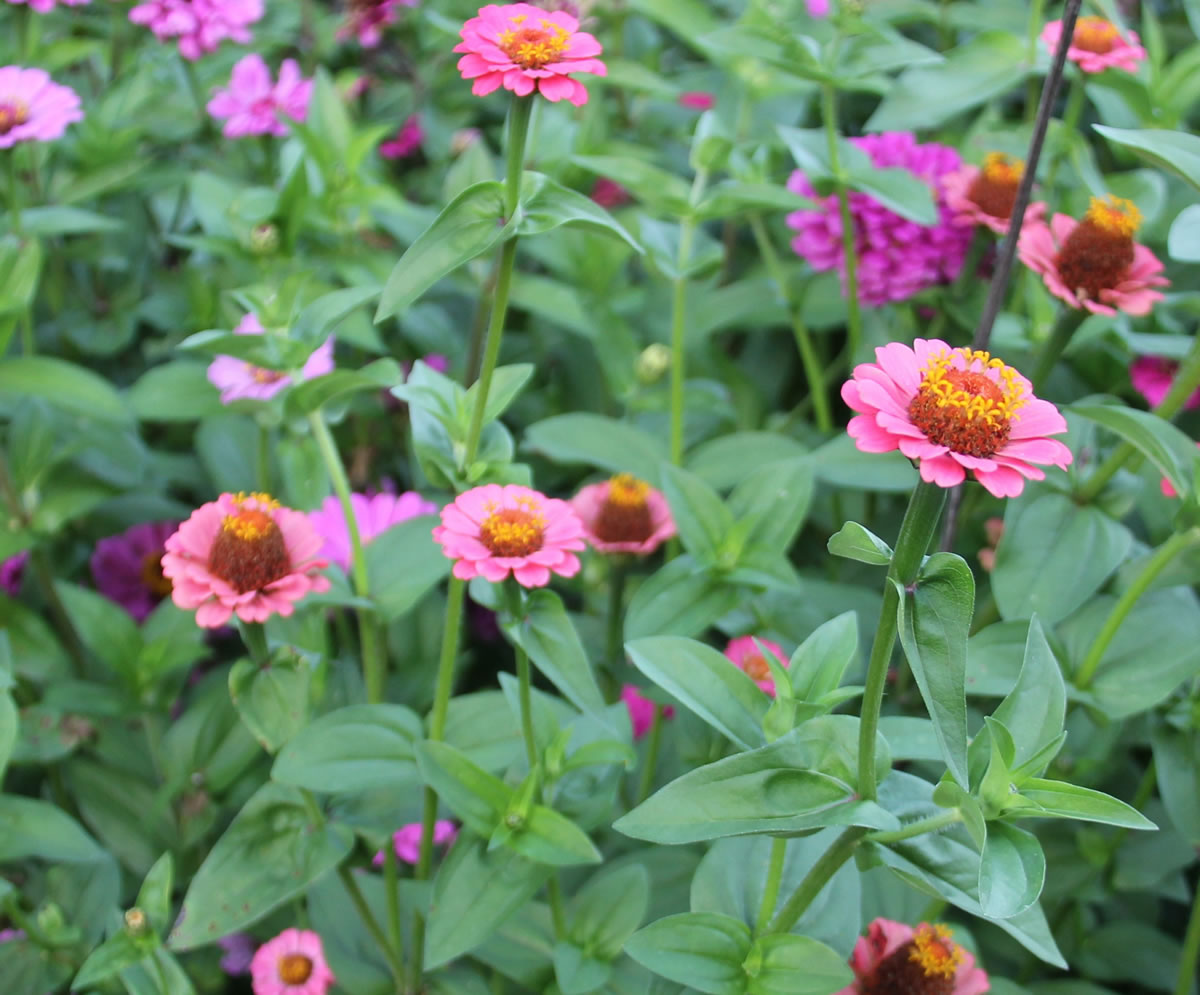In my garden, the Japanese anemones continue their long season of bloom in the established perennial borders. Their appearance coincides with the shorter days and cooler temperatures of fall. Like their fellow late-season compatriots, the rudbeckias and echinaceas, they continue through the autumn season and have been known to meet the arrival of the winter months while still in flower.
Although I rely on large sweeps of black-eyed, yellow flowers such as Rudbeckia hirta and R. fulgida “Goldsturm” to enliven my country-style borders with strong sweeps of color, the hybrid Japanese anemones add a distinct note of grace and charm to the late-season garden. Many summer perennials flower in strong, bold colors. The more subtle hues of anemones are indispensable for melding the varied colors of fall together.
Fall-flowering anemones come in a wide range of similar colors. They bloom as single or semi-double flowers in shades of white, silvery pink or rose and there are many named varieties. If you see one in a garden that you like, ask the gardener if they know the name or can show you the plant tag. Japanese anemones are listed in plant encyclopedias as Anemone x hybrida, A. japonica and sometimes, A. hupehensis japonica.
I make this notation because there are many different forms of garden anemones and many of them have their flowering season in early to mid-spring. The forms listed above all flower in late summer and continue into fall. By knowing the distinct name of the plant, you can be sure to buy the exact plant color you want for your garden. I know that every gardener understands what I mean when I talk about the disappointment of planting a choice flower and having it return next year as something different than what you had hoped it would be.
One of the best garden tricks I have learned is to use plants in decorative containers to fill empty spaces in the garden. At the beginning of the growing season, I like to plant up a few of my favorite seasonal plants in pots specifically for this purpose. Any one of the late flowering mums is a perfect example. As the end of summer brings a change in the weather, many perennials in the garden will die back leaving open patches in beds and borders. Now you can move in the pots of chrysanthemums to fill the space with a fresh flush of autumn bloom.
Plan ahead by potting up a selection of plants for specific positions in the garden. In this situation, you will have to consider the size, color and form of both the container and the filler plant so that it fits in well with the established garden scene. A terra cotta pot of Chrysanthemum “Hot Salsa” with its cha cha red petals and golden sun centers will serve as good filler in front of spent day lilies or crocosmias. Light up a dark corner with a glazed ceramic planter overflowing with white impatiens and metallic silver helichrysum.
You can create a stash of filler plants to have on hand if another plant should die or need to be removed from the garden. Plant a few neutral style planters with reliable, hardy evergreen boxwoods or Japanese hollies (Ilex spp.). These will be easy to move and will fit into any mix of plants or color combinations. They can also be used to block a path or hide a sore spot in the garden. If, over time, you find that you like the filler plant more than the plant in the garden, transplant them when they have finished blooming.
Some gardeners fall so deeply in love with their potted plants that they begin to group them in garden beds of their own. If you want to create an area of special interest for smaller plants such as alpines or rock garden plants, gather them into groups of hypertufa planters or other interesting containers. Grouped in strategic locations, they break the monotony of a terrace or patio and can even stand alone as a featured planting border.
Hydrangeas are wonderful for their large, floriferous displays that hang on through November and December. If you have space for only one plant, be adventurous and try one of the dramatic Oak Leaf hydrangeas. The combination of pale, sun bleached flower clusters against maroon and burgundy autumn foliage makes this plant a one-of-a-kind find. Another favorite of mine is the small mophead “Pia.” This dazzler can have a mix of blue, purple and pink flower clusters on the same plant.



